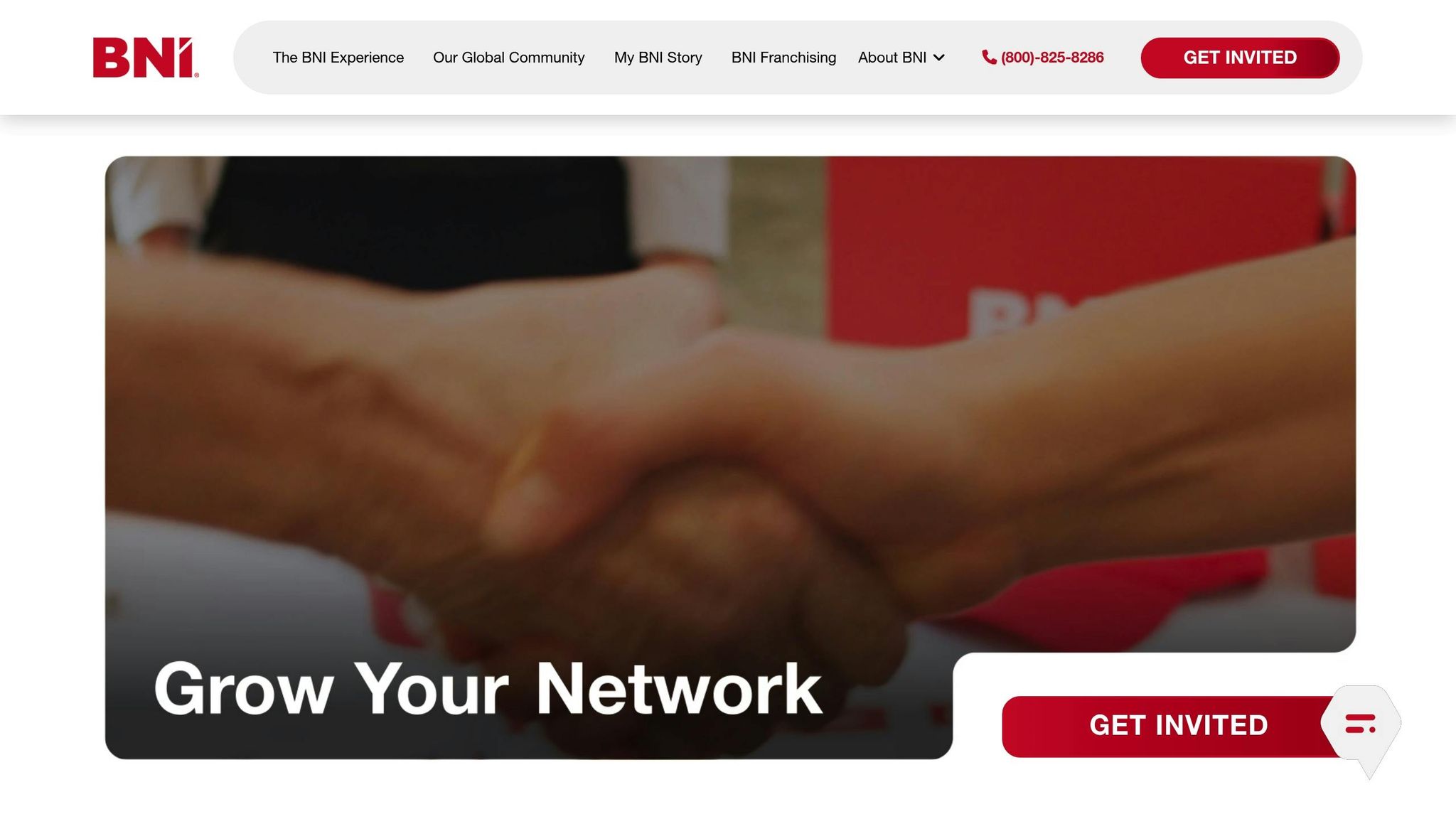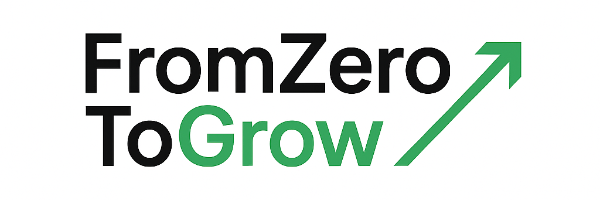Networking ROI: Lessons from Success Stories
Learn how to measure the ROI of your networking efforts and turn connections into valuable opportunities through actionable strategies.

Networking ROI is about measuring the outcomes of your networking efforts - both the direct results, like new clients or job offers, and the indirect benefits, like industry insights or reputation growth. By tracking these results, you can turn casual connections into purposeful opportunities.
Here’s what you’ll learn:
- What Networking ROI means: It's not just financial gains but also long-term career value.
- Why tracking matters: It helps you focus on efforts that align with your goals, whether it's landing a promotion or growing your business.
- How to measure it: Using tools like LinkedIn, CRM systems, and event apps to track connections and results.
- Success stories: Examples of professionals across industries who used structured networking to achieve measurable outcomes.
- Actionable tips: Set clear goals, use digital tools, and track short- and long-term progress to improve your ROI.
How Mike Generated $208,000 from his BNI Networking Group in One Year

How to Measure Networking ROI
Measuring the return on investment (ROI) of your networking efforts becomes easier when you rely on data-driven tools to track and analyze your activities.
Tools for Tracking Networking Results
A variety of tools can help you measure the effectiveness of your networking:
- Digital business card platforms: Services like Doorway make exchanging contact information seamless, even offline. They also integrate with mobile wallets like Apple Wallet and Google Pay, making it easy to store and access contacts.
- Mobile event apps: These apps go beyond basic event management by offering features like in-app messaging, attendee profiles, and appointment scheduling. They also collect data on interactions and, in some cases, provide smart recommendations for connections.
- Lead capture applications: Tools such as Stova Digital Lead Capture sync with CRM systems to track leads generated during networking. These apps often use business card scans or QR code exchanges to capture data.
- CRM systems: As your network grows, CRM platforms become essential for managing contacts and tracking new business opportunities. Many of these systems integrate seamlessly with lead capture tools, ensuring that initial interactions are recorded and organized efficiently.
- Social media monitoring: Platforms like LinkedIn, Twitter, and Instagram are great for assessing the impact of your networking efforts. By tracking event-related hashtags, new connections, and overall sentiment, you can gauge how well your efforts are resonating online.
- Meeting trackers: Tools that use RFID-enabled areas or event app features can log one-on-one interactions. They measure connection volume, frequency, and duration, providing valuable insights into your engagement levels.
The best tools for you will depend on the scale and complexity of your networking activities. By aligning your tools with your specific goals, you can effectively measure and improve the outcomes of your networking efforts.
Success Stories: Networking ROI Examples
Tracking networking efforts can lead to impressive career and business advancements. Stories from different industries show how setting specific goals and consistently following up on connections can turn casual encounters into meaningful, strategic opportunities.
Real Networking Success Cases
Industries like technology, energy, consulting, and marketing have seen tangible benefits from structured networking. Professionals in these fields have gained access to strategic partnerships, navigated smoother career changes, and increased both client referrals and revenue. The key? Keeping track of interactions, scheduling timely follow-ups, and analyzing results to understand which activities bring the most value. Despite the diversity of industries, these stories reveal a shared formula for success.
Comparing Different Success Stories
Though the details differ, certain patterns stand out across these examples. In technology, carefully tracking connections opened doors to critical investment opportunities. For career transitions, targeted networking led to better roles with improved compensation. In consulting, consistent follow-ups created strong referral networks that fueled business growth.
What ties these stories together is the power of setting clear, measurable goals. By doing so, professionals can fine-tune their networking strategies and achieve lasting success.
How to Improve Your Networking ROI
Boosting the return on your networking efforts takes more than just showing up at events and collecting business cards. It’s about having a clear plan, setting measurable goals, and using the right tools to build meaningful connections.
Setting Clear Networking Goals
The key to effective networking is having specific, actionable goals. Instead of vague intentions like "meet more people", focus on concrete outcomes. For example, instead of saying "expand my network", aim for something like, "Connect with 15 marketing directors in fintech companies within 90 days to explore potential partnerships." This approach keeps you focused and makes it easier to track your progress.
Tailoring your goals to your industry can also make a big difference. A software developer might aim to attend three tech meetups a month and connect with two senior engineers, while a sales professional might set a quarterly goal of meeting five procurement managers.
Timeframes are equally important. Short-term goals (30-90 days) might focus on building initial relationships, while longer-term objectives (6-12 months) could target specific outcomes like job referrals, partnerships, or speaking engagements. Write these goals down, set reminders, and review your progress regularly. This turns networking into a purposeful, results-driven activity rather than just casual socializing.
Using LinkedIn and Digital Tools
LinkedIn is a powerful platform for professional networking, but success requires more than just sending out connection requests. With a strategic approach, you can make the most of its advanced features.
For instance, LinkedIn Sales Navigator lets you filter potential connections by industry, company size, job function, and even recent job changes. This helps you zero in on people who align with your networking goals, saving time and effort.
Engaging with posts and content on LinkedIn is another great way to start conversations naturally. Thoughtful comments on your target connections' posts can build familiarity and make your outreach feel more authentic, which often leads to better response rates.
When it’s time to reach out directly, personalized messaging is key. Craft templates that feel tailored by referencing details from the recipient’s profile or recent activity. This shows genuine interest and increases the chances of a positive response.
For those managing a large network, integrating LinkedIn with a CRM tool can be a game-changer. It helps you keep track of follow-ups and ensures no connection is forgotten.
The rise of virtual events has also opened up new networking opportunities. Webinars, online meetups, and virtual conferences allow you to connect with professionals worldwide without the hassle of travel. Many find they can attend more events and make more connections this way than through traditional in-person events.
By combining these digital tools with a clear strategy, you can streamline your networking efforts and set the stage for measurable results.
Tracking Short-Term and Long-Term Results
Once your networking strategy is in place, tracking your progress is crucial to ensure your efforts pay off.
Start by monitoring short-term metrics. Keep an eye on response rates to your messages, the number of meaningful conversations you have at events, and how many follow-up meetings you schedule. These indicators provide immediate feedback and help you fine-tune your approach.
On a weekly basis, track new connections, follow-ups, and scheduled meetings. This regular check-in keeps you on track and helps you spot trends in what’s working and what isn’t.
Quarterly reviews are an opportunity to assess the quality of your relationships. How many of your connections have grown into regular communication or led to introductions and opportunities? This deeper analysis goes beyond numbers and highlights the value of your efforts.
Annual assessments reveal the full impact of your networking. Calculate the tangible benefits - new clients, job offers, speaking engagements, or partnerships - and compare them to the time and money you’ve invested in networking. This helps you understand the true return on your efforts.
To keep your network strong, relationship mapping can be a useful tool. Use a simple spreadsheet or specialized software to track when you last spoke with key contacts, their current priorities, and ways you might assist them. This ensures important relationships don’t fade over time.
Finally, practice attribution tracking. When new opportunities arise, trace them back to their origin. For example, that new client might have come from a referral, which started with a connection you made at a conference six months ago. Understanding these links helps you focus on the activities that yield the best results.
Treating networking like a business process - with clear goals, strategic execution, and regular evaluations - can transform it from a casual activity into a powerful driver of success.
Common Problems in Measuring Networking ROI
Measuring the return on investment (ROI) of networking can be a tricky task, even for experienced professionals. The challenges often stem from the intangible nature of networking's benefits and the complexities involved in tracking its impact. Below, we’ll unpack the main hurdles and explore strategies that can help turn networking efforts into measurable results.
Biggest Networking Measurement Challenges
One of the toughest aspects of measuring networking ROI is that its benefits are often intangible. Unlike a marketing campaign where you can count clicks or conversions, networking focuses on building trust, rapport, and reputation - elements that are undeniably valuable but hard to quantify in dollars and cents.
Attribution is another major hurdle. Let’s say you meet a potential client at a conference, and months later, they sign a contract. How do you pinpoint what sealed the deal? Was it the initial meeting, your follow-up efforts, or external factors like market conditions? This lack of clarity becomes even more complicated when relationships involve multiple interactions across various channels.
The long timeline of networking adds another layer of difficulty. Unlike digital ads that can generate leads almost instantly, networking relationships often take months - or even years - to yield tangible results. This delay can push professionals to focus on short-term wins while overlooking the bigger picture.
Another issue is the lack of standardized methods to measure networking ROI. Without a clear, industry-wide framework, it’s hard to evaluate whether your approach is effective or how your results compare to others in your field.
And then there’s the challenge of varying relationship quality. Networking outcomes can differ greatly depending on the individuals involved and the industries they represent, making it difficult to establish consistent metrics.
Finally, data collection can be a logistical nightmare. Networking information is often scattered - some in your CRM, some in your email inbox, some on LinkedIn, and maybe even scribbled on a notepad. This fragmentation makes it hard to create a complete and accurate view of your networking efforts.
These challenges can feel overwhelming, but they’re not insurmountable. By adopting targeted strategies, you can make networking ROI more tangible and actionable.
Proven Solutions for ROI Tracking
Despite the hurdles, there are practical ways to track networking ROI more effectively. Here are some strategies that have worked for many professionals:
- Categorize your contacts. Not all connections are created equal. Group your network into categories like "potential clients", "referral sources", "industry leaders", and "knowledge sharers." This makes it easier to identify which relationships are driving results.
- Conduct regular feedback surveys. Short surveys can provide insights into how your contacts view your expertise and the value of your relationship. While this feedback might not directly translate into dollars, it offers a way to measure intangible benefits.
- Leverage multi-touch attribution tools. These tools help you track the entire journey from the first interaction to the final outcome, assigning credit to every touchpoint along the way. This can provide a clearer picture of your networking’s overall impact.
- Track milestones. Instead of waiting for final outcomes, monitor intermediate indicators like follow-up meetings, introductions made, or collaborative projects initiated. These smaller wins can give you a sense of progress.
- Create a standardized tracking system. Whether it’s a simple spreadsheet or a CRM platform, consistently record key metrics like event types, new connections, follow-up actions, and relationship milestones. This consistency makes it easier to spot patterns and calculate ROI.
- Schedule regular reviews. Set aside time each week to update your records and reflect on recent interactions. This habit ensures your data stays current and prevents valuable details from slipping through the cracks.
- Analyze past successes. When a new opportunity arises, trace it back to the networking touchpoints that contributed to it. Understanding what worked can help you focus on activities that consistently yield results.
While perfect precision in measuring networking ROI may not be achievable, focusing on trends, milestones, and qualitative insights can provide a well-rounded view of the value your relationships bring over time.
Key Lessons About Networking ROI
Exploring various networking success stories and understanding the challenges of measuring outcomes reveals some practical lessons that can reshape how you approach building professional relationships and advancing your career.
Main Takeaways from Success Stories
Looking back at the examples and strategies discussed earlier, a few key points stand out:
- Consistency matters more than bursts of effort. Building strong professional relationships isn’t about one-off gestures or sporadic outreach. It’s about steady habits - regularly connecting, following up, and nurturing those relationships over time. This gradual approach leads to lasting benefits.
- Quality over quantity. A large contact list doesn’t guarantee success. Focus on forging meaningful connections with people who align with your goals and values. A smaller, engaged network often delivers far better results than a long list of superficial contacts.
- Tracking keeps you accountable. By measuring your networking activities, you can identify which approaches work best. Track which events, platforms, or types of relationships offer the most value, and adjust your efforts based on those insights.
- Digital tools complement personal connections. Platforms like LinkedIn and CRM systems can help you stay connected between in-person meetings and uncover new opportunities. These tools amplify the impact of face-to-face interactions rather than replacing them.
- Think long-term. Networking isn’t about instant results. Many of the best opportunities - whether referrals, partnerships, or collaborations - can take months or even years to develop. Patience and persistence often pay off.
- Reciprocity builds trust. Offering value to others without expecting immediate returns fosters goodwill. Over time, this generosity often circles back in the form of referrals, partnerships, or unexpected opportunities.
These lessons highlight the importance of a thoughtful and strategic approach to networking, setting the foundation for actions that can maximize your return on investment.
Your Next Steps
Turn these insights into actionable steps to make your networking efforts more intentional and effective.
Start by tracking your networking activities. You don’t need fancy tools - a simple spreadsheet or even your phone’s notes app will do. Log new connections, follow-ups, and key milestones in your relationships. This will help you stay organized and focused.
Set specific, measurable goals for the next 90 days. Avoid vague objectives like "network more" and aim for concrete targets such as:
- Attending two industry events.
- Scheduling five coffee chats with existing contacts.
- Connecting with ten new professionals on LinkedIn.
Take a closer look at your current network. Are there industries, skills, or perspectives missing that could complement your expertise? Identify potential mentors, collaborators, or peers who could help you grow and find ways to connect with them.
Finally, build a habit of reviewing your progress. Dedicate 30 minutes each month to assess your activities, update your records, and plan your next steps. This regular check-in ensures your networking stays aligned with your career goals and helps you spot trends or opportunities early.
With these strategies in place, you can take a more deliberate approach to networking and start seeing tangible results over time.
FAQs
How can I set clear goals and measure the success of my networking efforts?
To create a focused approach to networking, start by setting clear goals using the SMART framework. This means your goals should be specific, measurable, achievable, relevant, and time-bound. For example, you could aim to connect with five professionals in your field within three months or schedule two follow-up meetings each month.
Keep track of your efforts by maintaining a record of your activities, like new connections made, follow-ups completed, and referrals received. Simple tools like spreadsheets or more advanced CRM systems can help you stay organized and monitor your progress. Regularly review your results to see how they stack up against your goals, evaluate your networking ROI, and pinpoint areas where you can improve.
What are effective ways to measure and improve the ROI of networking efforts?
Measuring the return on investment (ROI) from networking can feel tricky, but a few focused strategies can make it manageable and effective. Begin by setting clear objectives for your networking efforts. Are you aiming to generate more referrals? Build strategic partnerships? Increase leads? Defining your goals upfront makes it easier to measure success and stay on track.
To evaluate your efforts, rely on tangible metrics like revenue generated from networking leads, conversion timelines, and the quality of referrals you receive. Don’t overlook less obvious benefits - track engagement on platforms like LinkedIn or other professional networks to gauge the strength of your connections. Surveys or direct feedback from your network can also reveal areas for improvement and hidden opportunities.
The key is to regularly assess your outcomes and tweak your approach as needed. This ensures your networking stays aligned with your goals and delivers meaningful results.
How can I build meaningful, long-term professional relationships through networking?
Building long-term professional relationships starts with creating genuine connections. Take a sincere interest in others - ask questions, listen actively, and engage with their ideas. Consistency also matters. Stay in touch by checking in regularly, sharing useful information, and interacting thoughtfully on social media.
To take these connections further, look beyond formal work settings. Casual conversations, mentoring, or teaming up on projects can build trust and strengthen your bond. Over time, these small but meaningful efforts can lead to shared growth, mutual support, and relationships that truly stand the test of time.





